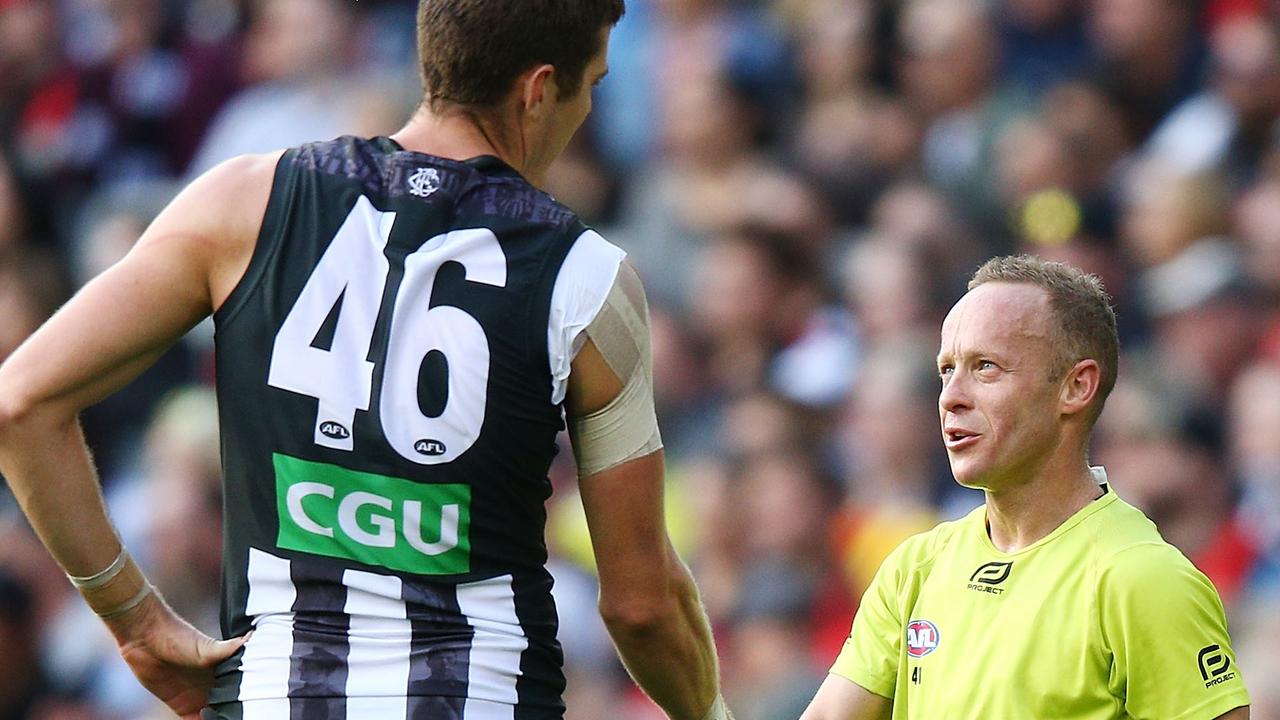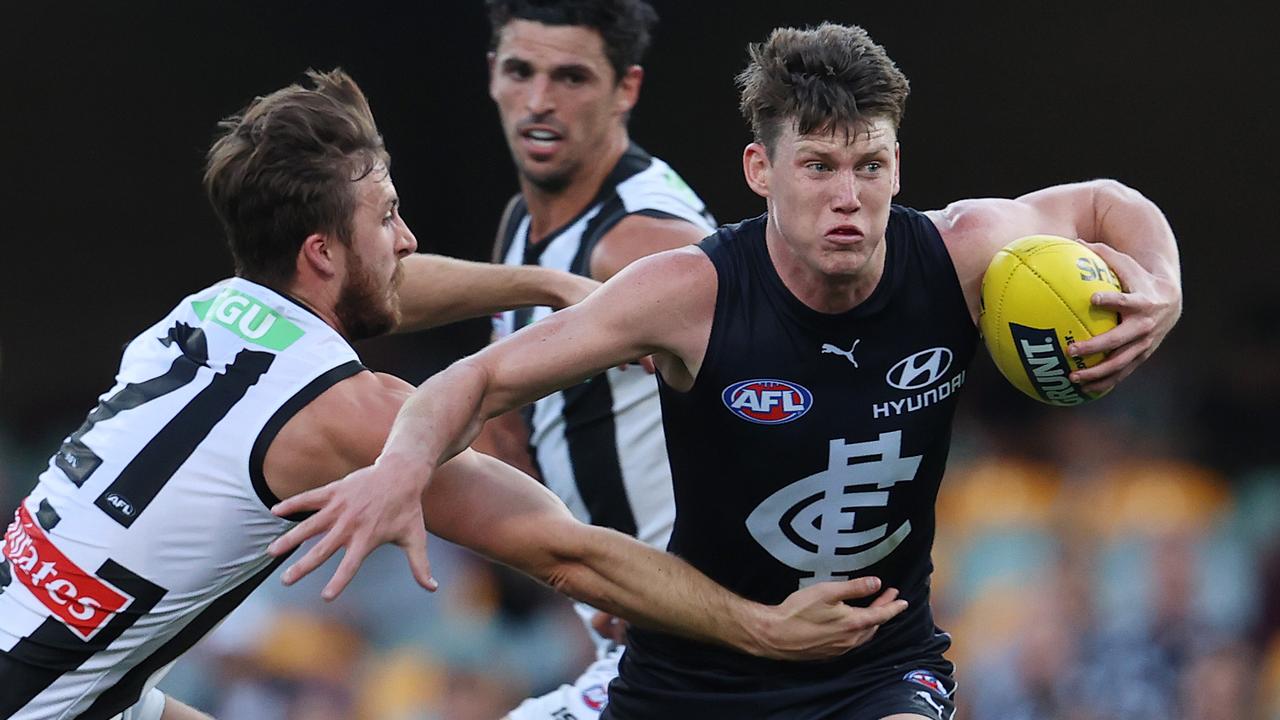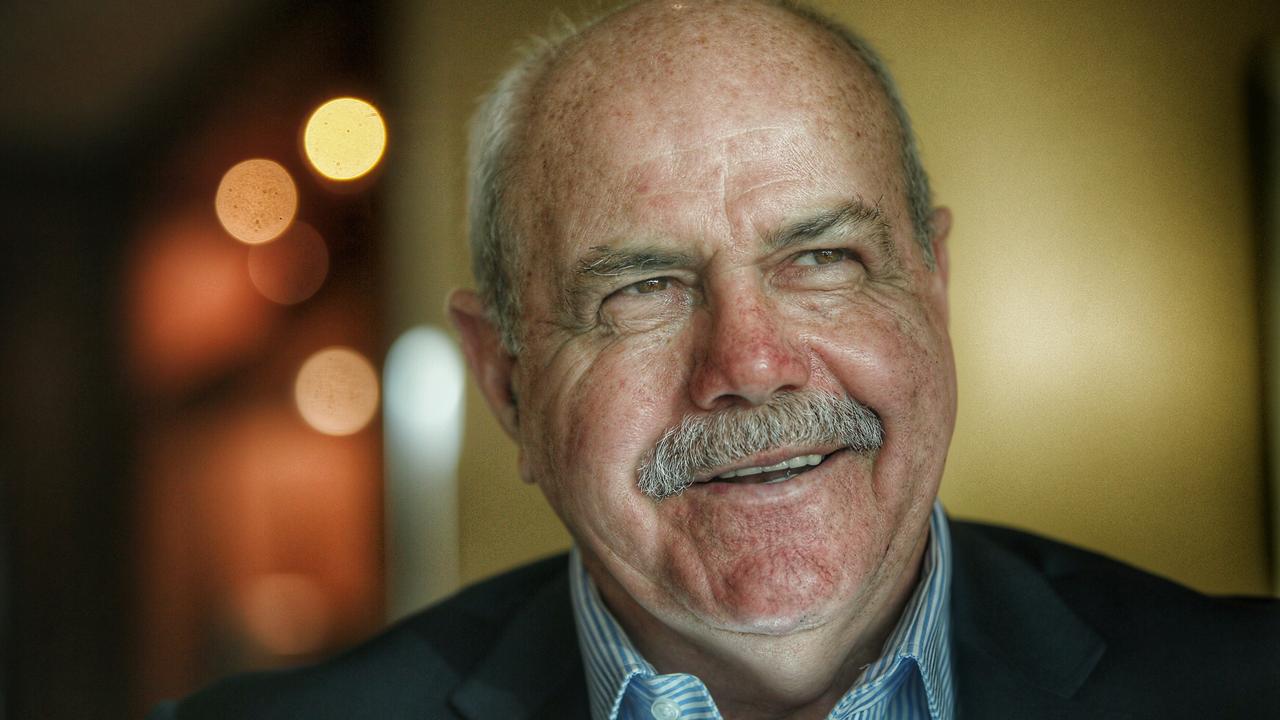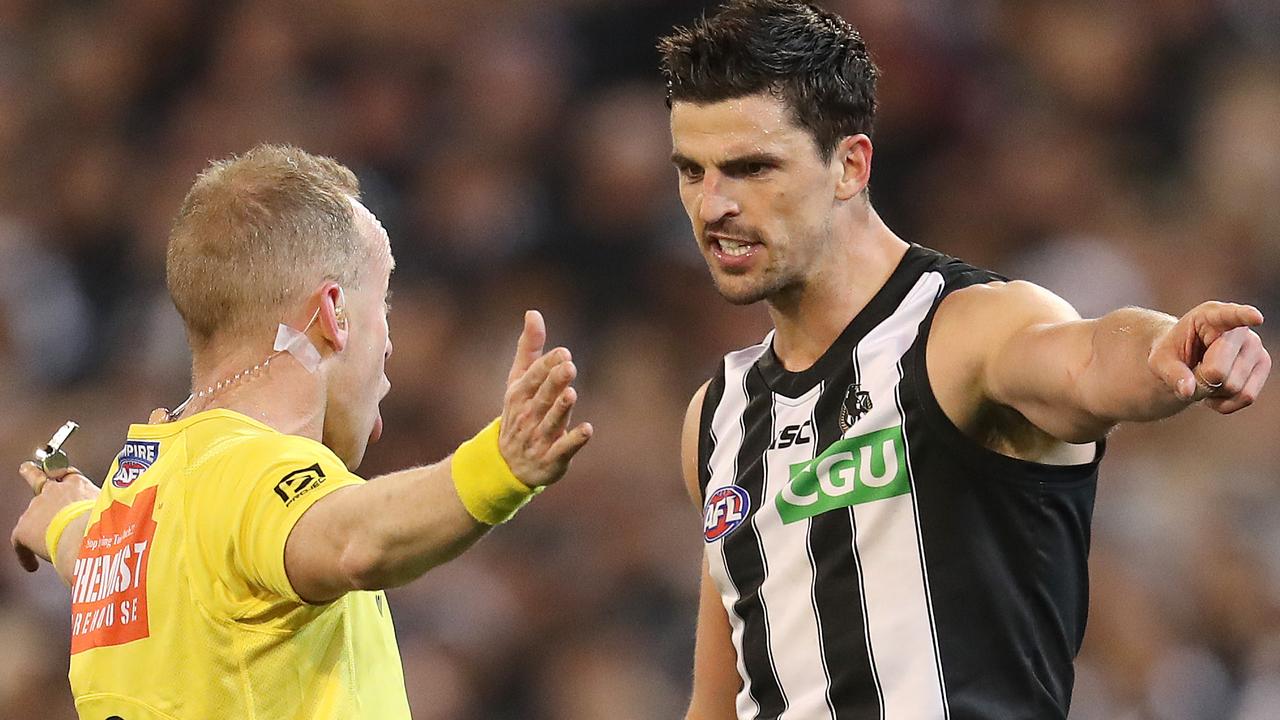AFL rule changes 2021: Leigh Matthews supports bid to rescue the game from defensive coaches
AFL great Leigh Matthews has described opponents to rule changes as ‘flat Earthers’ and says the league must rescue the game from coaches.

The AFL’s greatest player has backed the league’s efforts to “rescue” the game even if it means experimenting with starting zone rules.
Hawthorn great and four-time premiership coach Leigh Matthews said the game’s attacking flow had been “kidnapped” by modern coaching tactics and “full-time coaches”, who had bogged down the spectacle with congestion.
The AFL this week announced rule changes in a bid to ease congestion, including the reduction in interchange rotations from 90 to 75, a crackdown on players moving off the mark and more room for fullback kick-ins.
Kayo is your ticket to the best sport streaming Live & On-Demand. New to Kayo? Get your 14-day free trial & start streaming instantly >
AFL football operations boss Steve Hocking also revealed plans to trial zone rules in the VFL next year as it searches for a solution to eliminate rolling mauls.
Under the trial, a minimum of three players from each team will be stationed inside the 50m arc — including one in the goalsquare — for all kick-ins and boundary throw-ins.
Matthews said the VFL move, like the six-six-six starting positions, could help the spread of players across the ground.
“The best thing that has happened to football in my opinion in the last couple of years is the 6-6-6 formation at centre bounces,” Matthews said.
“The game has got a terrific look at centre bounces when players are spread pretty much from end to end and I think the game is better if players are spread from end-to-end more often.

“I think the AFL knows this, but how do you make it happen because you can’t make it voluntary because coaches coach to win games of footy. Coaches aren’t coaching for the spectacle of the game.
“Basically making spread of the players mandatory is the ultimate solution to the objective of allowing more time and space for attacking flow.
“The (VFL) competition is largely a reserves competition I think, so you have got to trial it somewhere, but at least it gives it a look at something under match conditions, which I think is a good thing.”
Matthews said the game had changed more in the recent generation of “full-time coaches and full-time players” than it had in the previous 100 years.
The Hawks legend said people who didn’t want change to the game needed a reality check.
“The flat-Earthers are the people that don’t want change,” Matthews said.
“What they refuse to see is that the game is being changed by the coaching staff and all the AFL as custodians of the game are trying to do is rescue it from being kidnapped.
“I’ve got full confidence that Steve Hocking and his AFL crew will do their job as custodians of the game and try to make it the best possible spectacle.
“I think the players are better but the spectacle of the game is not better. There is something wrong with that isn’t there?
“With due respect to Mason Cox … Mason has only seen modern footy. Anyone who can’t remember what footy was like when the play was a bit more spread out, which is about 10-15 years ago.
“I would love to see the game played by the modern footballers under the positional structures of 10 or 15 years ago.”

Matthews, however, was not convinced interchange rotations would be a quick fix and described the other changes as only “minor adjustments”.
“I am unsure whether the reduction of interchange will make a whole lot of difference, certainly 90 to 75 won’t,” Matthews said.
“But I understand the principle that even if you say we are going to take the interchange right back to 30 or 40, you’ve probably got to do it over two or three years. I understand that principle, just to let everyone adjust to that.
“Some people say if you brought interchange back to 30-odd that would solve the problem ... but I’m not convinced it would solve the problem.
“The objective is clear, reduce congestion, increase attacking flow, what methods you employ that contribute to that is more a question than an answer. That’s the conundrum.”
DANGER FEARS FOR PLAYER SAFETY
AFL Players Association president Patrick Dangerfield fears for the “health and safety” of players after the league’s decision to slash interchange rotations for next season.
Following the AFL’s announcement on Wednesday it was cutting interchange rotations from 90 to 75, Dangerfield said he had concerns over the potential ramification for injury for fatigued players coming off a testing COVID-stricken season on the road.
“Even though this season presented us with a reduced number of games it was also one of the longest seasons we had given when we started pre-season, the break in playing and training and then when ultimately the season concluded,” Dangerfield said on SEN.
“I think to go into a season next year reducing interchanges, I am a bit of a sceptic on it still, as I suspect quite a few players will be.
“It (75 rotations) will certainly fatigue players – whether that is a good thing and it opens up the play remains to be seen.
“I think I’m wary of the potential ramifications for injuries given the season that we had this year and the … effect that may have given there won’t be a huge amount of time off for quite a number of players to be able to recover to go into a full and normal season compared to what we faced this year.
“It will be interesting. I just do have concerns around the health and the safety of our players. The last thing we want is an increased number of injuries.
“There are teams where teams don’t use their full allocation (of rotations), but at the same time they are there for a reason.”
The moves have been welcomed by long-time advocate for change and AFL great Kevin Bartlett.
“Getting down to 75 is a step in the right direction, but it’s got to come down a lot more than that,” he told the Herald Sun.
“Hopefully more reductions will follow in the next couple of years.”

The league is also looking at trialling zone rules in the VFL next year as it attempts to eliminate rolling mauls.
Three players from each team will be stationed inside the 50m arc — including one in the goalsquare — for all kick-ins and boundary throw-ins.
But Bartlett said such a radical move was not the solution for easing congestion.
“Our game never needed zones for 100 years — it doesn’t need zones now,” Bartlett said.
“If you get the interchange numbers down to the right number, then fatigue will govern all of that.”
AFL football operations boss Steve Hocking said the league had not wanted to make a “radical” change to bench rotations in one season, so settled on an “incremental” change.
But Hocking said on Thursday the AFL would stay open to the prospect of further interchange reduction.
AFLPA player and stakeholder relations general manager Brett Murphy, said players had been “broadly opposed” to a reduction in the interchange cap and feared the impact it could have on them, especially if quarters returned to 20 minutes next year.
“The change is specifically aimed at fatiguing them in order to reduce congestion and we — and they — are concerned about the impact a change like that would have on them,” Murphy said.
“We are concerned that if we go back to 20-minute quarters, and at the same time reduce rotations, it makes it harder for us to agree to other changes which potentially benefit the game.”
Murphy said the playing group favoured a move to 18-minute quarters next year.
The league is still finalising the length of quarters for next season, but Dangerfield hoped the league would settle in the middle of this year’s reduced quarter lengths and 20-minute terms.
“My personal view is I think 16 and a half was too short and I think 18 is about right,” Dangerfield.
“We don’t know detail around that as yet. I suppose adding an extra layer of complexity to that was at different stages this year the shorter breaks worked quite well and I think fans really enjoyed them, even though it was only 17 rounds.
“I think in a normal season you may be able to improve the quality of a fixture because that was always a stumbling block around clubs not being able to play more than one five-day break and you can’t do it on travel.

“So I think if we don’t increase the quarter length too much then we have the ability to play some more of those shorter breaks.
“But with reduction of interchange with the potential – we don’t know what it means yet of increased quarter length – I don’t think that will happen.”
The reduced bench rotations was one of three key changes introduced by the AFL along with a crack down on players moving off the mark and providing more room for the fullback kick-ins.
Dangerfield was supportive of the changes to the man on the mark rule, saying it should help deliver “more open play.”
“I think the standing of the mark is potentially a really interesting one,” Dangerfield.
“It is one where you have been able to slow teams up across halfback and limiting that man on the mark, I think it will increase how quickly you can move the ball from halfback to half-forward, which hopefully makes the game more entertaining.”
Collingwood forward Mason Cox took to social media on Wednesday to protest the changes.
“Any chance we could keep the rules the same for once?” the American posted on Twitter.
“It’s been hard enough learning it from scratch much less it changing every year.
“Being an umpire would be a nightmare. Every year there are more changes to AFL than any other sport in the world I feel like.”
STEVE HOCKING ON:
Q: Response to people saying ‘don’t mess with the fabric of the game?’
“What we’re trying to do is protect the fabric of the game,” he said.
“I’m more than happy to be held to account to try and create more Dustin Martin moments in a Grand Final more often.
“I’m more than happy to be held to account about Liam Ryan taking on the game and having more moments in the game.
“If that’s attacking the fabric of the game, I’m not sure it is.
“We want to see the best players shine and produce highlights.”
Q: Man on the mark change: How does it work?
“There will be an adjustment for the player standing on the mark,” he said.
“They will only be permitted limited lateral movement on the mark.
“This is designed to increase the attacking player’s options and defending player’s ability to delay ball movement.”
Q: Impact on scoring, do you have a rough rule of thumb?
“When you look at the trend over a long period of time, it is definitely a concern for most people,” he said.
“What we’ve aimed to do with this is to really try and create more time and space in the game.
“There’s a lot of defensive layers which have crept in over time and it’s modern football, modern coaching, the players are fitter and stronger and faster.
“We’re just looking to try and find a greater balance between attack and defence, and we think this addresses that.”

Q: Are zones in the VFL and the east coast second-tier competition a test case for the AFL in 2022?
“We’re excited about the competition as it’s going to be a 22-team competition and it’s also a talent pathway,” he said.
“What we’ll do alongside the implementation of that rule is we’ll actually do a study with a university and run a PHD study that will run alongside it.
“That’ll take as much data as possible and collect it and certainly stay open on where it will go in the future.
“That’s the reason we’re doing it and we think it’s the right competition to trial it in and we’ll see where it takes us in the future.”
Q: Have you got a picture of how the VFL change will work?
“Yeah we do and we’ve still got further work to do on it,” Hocking said.
“The next phase of it is really to work through with the officials and make sure we get it right.
“It will be applied at boundary throw ins and kick ins.
“Boundary throw ins take about 14 seconds and kick ins around 12 seconds, so there’s enough time in the game for that to happen.
“And it’s about changing behaviour of players.
“You’ve got to remember players have been conditioned just to migrate towards where the contest is and try and be more defensive in their actions.
“So it’s trying to recalibrate that part, which is what we’ll do and we’ll just monitor it at that level and we’re quite excited about it.”
MORE AFL NEWS:
AFL players make breakthrough pay deal for 2021


